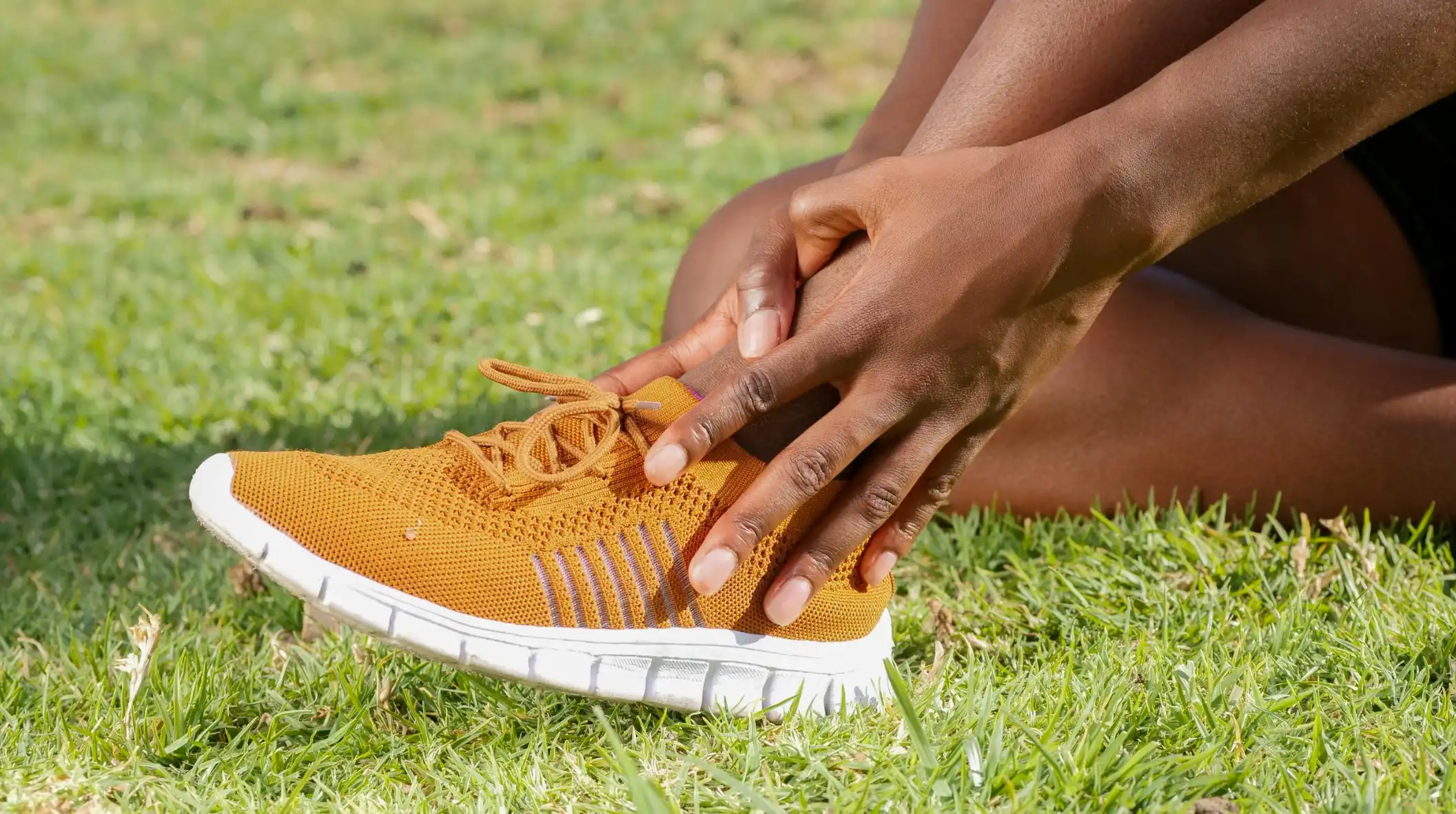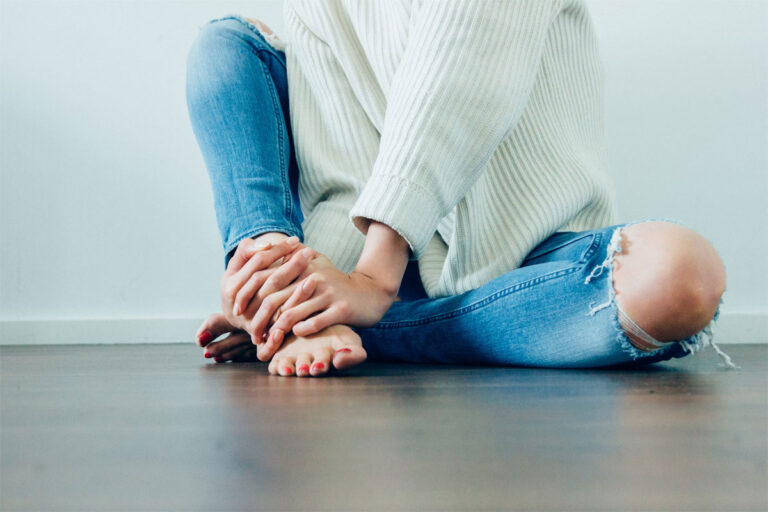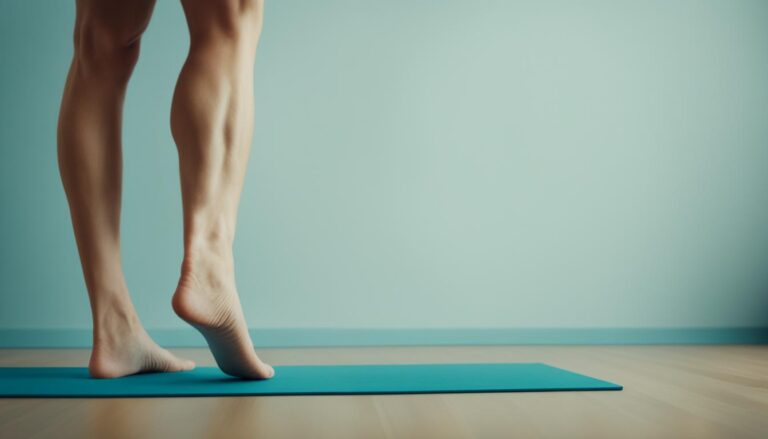Ankle Problems with Flat Feet – Causes and Treatments
Ever thought about why some folks deal with ongoing ankle pain? The story might be in their feet – if they’re flat. Having flat feet is a common problem for many people in the U.S. It can cause several ankle issues, making daily life hard. This article looks at these ankle problems, their roots, and how we can treat them.
Understanding flat feet’s link to ankle trouble lets us do something about it. This way, we keep active and comfortable. So what exactly happens to our ankles with flat feet, and how do we fix it? Let’s take a look.
Key Takeaways
- Flat feet can lead to a variety of ankle problems, including plantar fasciitis, overpronation, and posterior tibial tendon dysfunction.
- Underlying factors like age, weight, occupation, and activity level can increase the risk of developing ankle issues with flat feet.
- Proper diagnosis through physical examination and imaging tests is crucial for identifying the specific ankle problem and developing an effective treatment plan.
- Conservative treatments, such as physical therapy, custom orthotics, and anti-inflammatory medications, are often the first line of defense against ankle problems with flat feet.
- Preventive measures, including wearing supportive footwear, engaging in targeted exercises, and maintaining a healthy weight, can help reduce the risk of developing ankle problems related to flat feet.
Understanding Flat Feet
Flat feet, also called fallen arches, means the arches of your feet are low or missing. This makes your whole foot touch the ground. Reasons for this include genetics, aging, and past injuries. Knowing about flat feet helps treat any linked ankle problems.
What is Flat Feet?
Flat feet means your foot’s arches are very low or not there at all. So, the entire foot touches the ground. This lack of arch support can cause ankle pain, unsteadiness, and make some activities hard.
Types of Flat Feet
There are two kinds of flat feet: flexible and rigid. Flexible flat feet are common. The arches show up when your foot isn’t on the ground but disappear when you stand. It often starts in childhood and can be due to genes or how flexible your muscles are. Rigid flat feet, however, are uncommon and usually there at birth. The arches stay flat, no matter the foot’s position.
It’s important to know the different types of flat feet. This way, we can plan the best treatment. The causes and how to manage them can be different. So, medical experts can give better care by understanding each person’s flat feet type.
Common Ankle Problems with Flat Feet
Having flat feet can lead to several common ankle issues. These problems often cause discomfort and make daily activities harder. Some of the main issues linked to flat feet include plantar fasciitis, overpronation, and dysfunction of the posterior tibial tendon.
Plantar Fasciitis
Plantar fasciitis is the swelling of the tissue at the bottom of the foot, called the plantar fascia. It leads to pain in the heel and arch parts, especially in the morning or after being inactive. The reason people with flat feet often get this is because of the lack of proper arch support.
Overpronation
Overpronation happens when the foot rolls too much inward while walking or running. This is common in people with flat feet. It can cause stress on the muscles, tendons, and joints in the foot and ankle. This, in turn, leads to pain, less stability, and a higher chance of injury.
Posterior Tibial Tendon Dysfunction
The posterior tibial tendon helps hold the foot’s arch up. If you have flat feet, this tendon might get inflamed or torn. This condition is known as posterior tibial tendon dysfunction. It causes pain, swelling, and the arch of the foot may even start to collapse over time.
ankle problems with flat feet
Having flat feet can lead to various ankle issues, including arch pain and heel spurs. People with flat feet often feel pain in their arches due to a lack of support. This discomfort is because their feet do not support the body well. Heel spurs can form on the heel bone due to the extra pressure from flat feet.
Metatarsalgia happens when there’s pain and swelling in the foot’s front area. For those with flat feet, this condition can get worse. Flat feet make it harder for the foot to absorb shock and remain stable.
Arch Pain
Arch pain is a major problem for people with flat feet. They often feel tired and achy. But, wearing the right shoes and using support insoles can relieve this pain.Looking for arch pain release choices? Visit our comfortable flat feet insoles page.
Heel Spurs
Heel spurs are small bony growths at the back of the foot. They happen because of the ongoing stress from having flat feet. Walking or standing can become quite painful. For treatment, doctors may suggest medicine to reduce swelling or even surgery.
Metatarsalgia
Metatarsalgia leads to pain in the foot’s front area. For those with flat feet, this pain can get worse from the lack of shock absorption. It usually feels like burning or a sharp ache. Orthotic inserts and proper shoes can help in treating this issue.
Risk Factors for Ankle Problems with Flat Feet
People with flat feet are more likely to have ankle problems. Knowing what leads to these problems helps people manage and avoid them. Age and weight are big factors for those with flat feet.
Age and Weight
As we get older, the muscles and tendons in our feet change. They lose their strength and stretchiness. This makes our feet and ankles more easily hurt. Over time, our bodies just wear out. This makes the risk for ankle problems higher in people with flat feet. Being overweight adds extra pressure on the feet and ankles. This makes problems from flat feet worse.
Occupation and Activity Level
What we do for work and how active we are can also affect our ankles. Jobs that need a lot of standing or walking can be tough on the feet. This includes jobs in nursing, retail, or construction. It can lead to plantar fasciitis or tendon issues. High-impact sports like running or basketball are hard on the ankles too. They stress the joints and tissues, leading to swelling and injuries.For further information on pain relief by insoles, visit this resource.
Knowing these risks can help people with flat feet keep their ankles healthy. Being proactive is key to preventing problems.
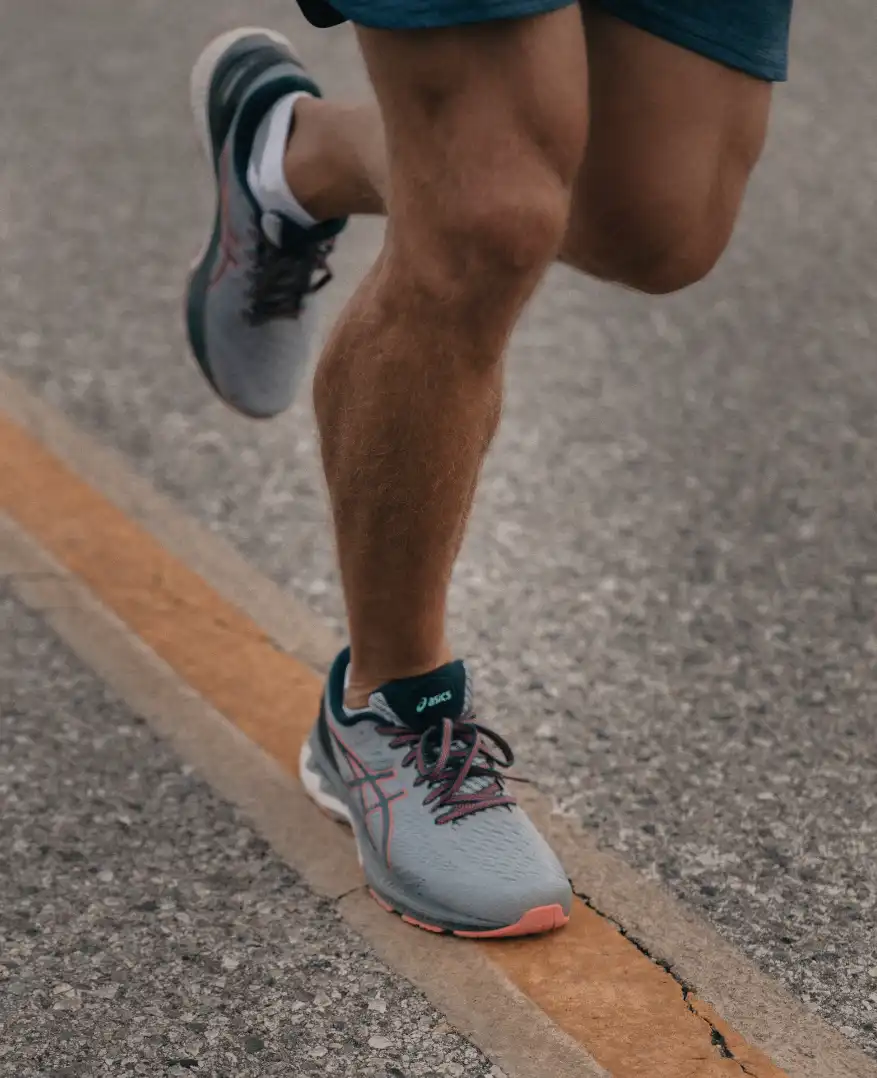
Diagnosing Ankle Problems with Flat Feet
Finding the cause of ankle problems from flat feet starts with a careful examination. Doctors and other healthcare experts look at how the feet and ankles are doing. They check alignment, movement, and if there’s pain or swelling.
Physical Examination
The doctor looks closely at your feet and ankles, noting signs of flat feet. This includes looking for low arches or too much foot rolling. They also test how flexible and strong the foot and ankle muscles are. This helps find the root of any ankle problems.
Imaging Tests
After the exam, imaging tests may be ordered. These can show more detail about the foot and ankle bones. X-rays check for bone issues, while MRIs focus on soft tissues like tendons. This info is key in diagnosing ankle problems from flat feet and figuring out the best treatment.
Treatment Options for Ankle Problems with Flat Feet
Treating ankle issues linked to flat feet involves several options. Patients often begin with simple, noninvasive methods to tackle pain and improve how their feet and ankles work. If these don’t work, surgery might be needed in rare cases.
Conservative Treatments
A top choice for ankle issues with flat feet is physical therapy. By doing targeted exercises and stretches, you can make your muscles stronger, improve flexibility, and boost the stability of your feet and ankles. This, in turn, reduces pain and stops future issues.
Wearing custom-made orthotics like arch supports is also key. These devices give your feet extra support and ensure they move correctly. They cut down anxiety on your ankles.
Taking medications to lower swelling and pain can be a big help too. Nonsteroidal anti-inflammatory drugs (NSAIDs) are often used for this. They’re good for short-term relief and to make you feel more comfortable overall.
Surgical Interventions
When all else fails, and the pain is unbearable, surgery might be the last resort. It’s mainly for those with severe problems or structural issues.
Tendon operation is a common way to tackle foot and ankle problems. Surgeons fix the posterior tibial tendon – this helps support the foot’s arch and ankle, making your foot and ankle work better.
Joint fusion is where they ‘join’ two or more bones in your foot. This stops the painful movement and makes it more robust. It’s good for those with severe arthritis or joint problems in the ankle.
Whatever method you choose, teamwork between you and your healthcare team is vital. By combining the right mix of treatments, most people can reduce or eliminate their ankle problems. And that means getting back to a full, healthy life.
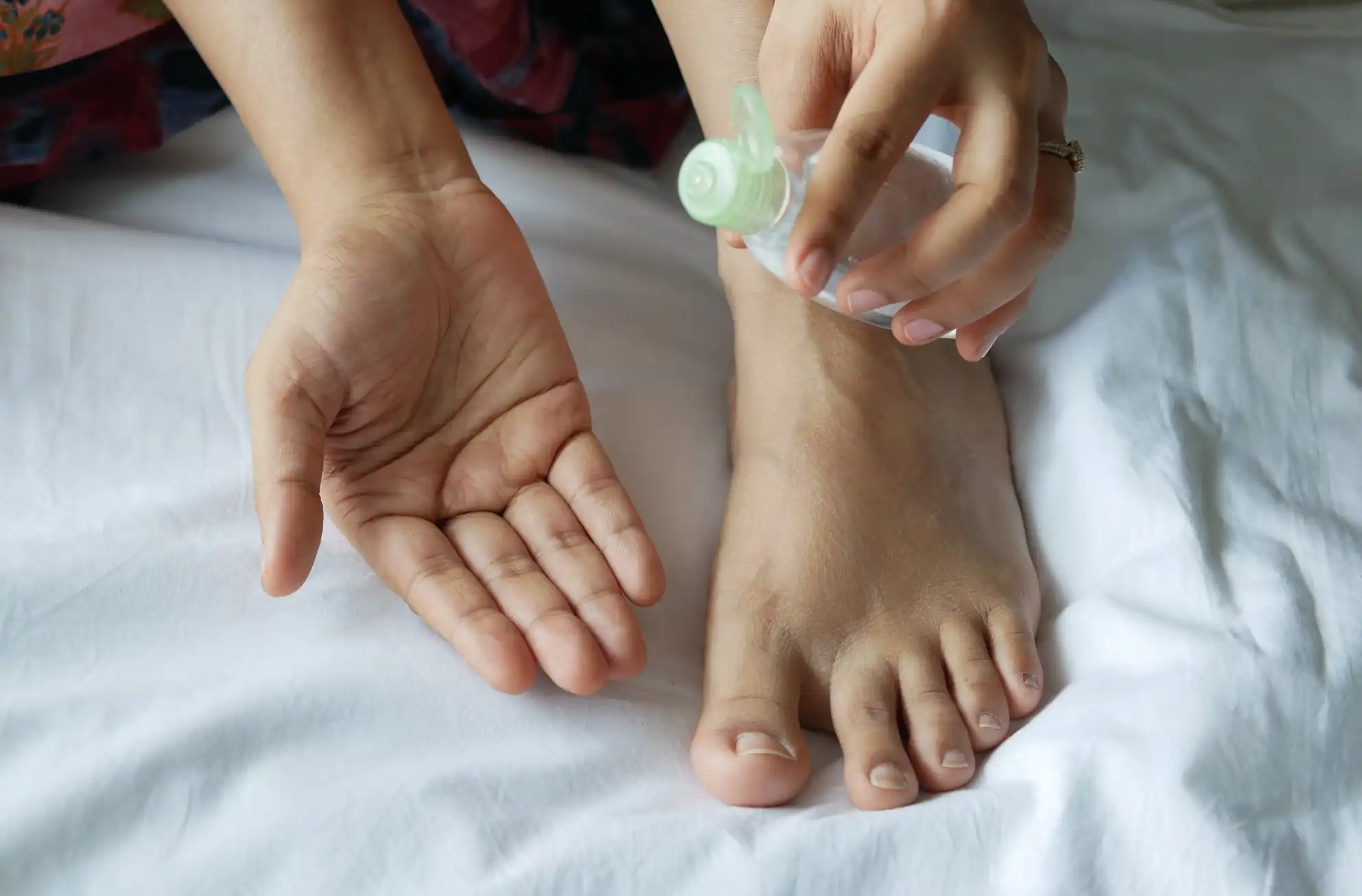
Preventing Ankle Problems with Flat Feet
Dealing with ankle issues linked to flat feet early is very important. It helps keep your whole foot healthy and stops future problems. Adding a few easy but strong habits daily lowers your chance of ankle problems. This means you can move better and feel more comfortable.
Proper Footwear
Choosing the right shoes is key to avoid ankle problems with flat feet. Your shoes should have good arch support, be stable, and have plenty of cushion. This helps your feet and ankles deal with daily stress. Quality, supportive shoes can change how you manage flat feet and lower ankle problem risk.
Exercise and Stretching
Working out and stretching can do wonders for those with flat feet. It strengthens your foot, ankle, and calf muscles, boosting stability. Plus, stretching improves how flexible and mobile your feet are. Try activities like yoga, Pilates, or exercises focused on your feet and ankles. They help keep your ankles healthy and your feet in good shape.
Weight Management
Keeping a healthy weight is crucial for flat feet and avoiding ankle issues. Being overweight puts more stress on your feet and ankles. This can lead to conditions like plantar fasciitis. By eating well and staying active, you lessen the burden on your feet. This reduces your chances of ankle problems as a result.
Living with Flat Feet
Living with flat feet can be challenging. But, with the right steps, we can deal with it. We need to work with our doctors, follow the correct treatment, and adjust our lives. This way, we can lessen its effect on us and avoid serious ankle issues.
Understanding what we need and finding a good mix of treatment is essential. This means talking to foot experts and planning a treatment that fits our needs. We might use special shoe inserts or specific exercises. These treatments can reduce pain, boost our foot function, and support our active lifestyle.
Making smart choices in daily life is also important. It’s good to wear supportive shoes, do exercises that are gentle on the feet, and keep a healthy weight. Such steps can lower the pressure on our feet and ankles. This helps us avoid major problems and stay active.
While living with flat feet can be hard, the right methods can help us do well. Working with our healthcare team, using the right treatments, and choosing healthy habits are key. This approach lets us manage our condition and keep feeling good.

